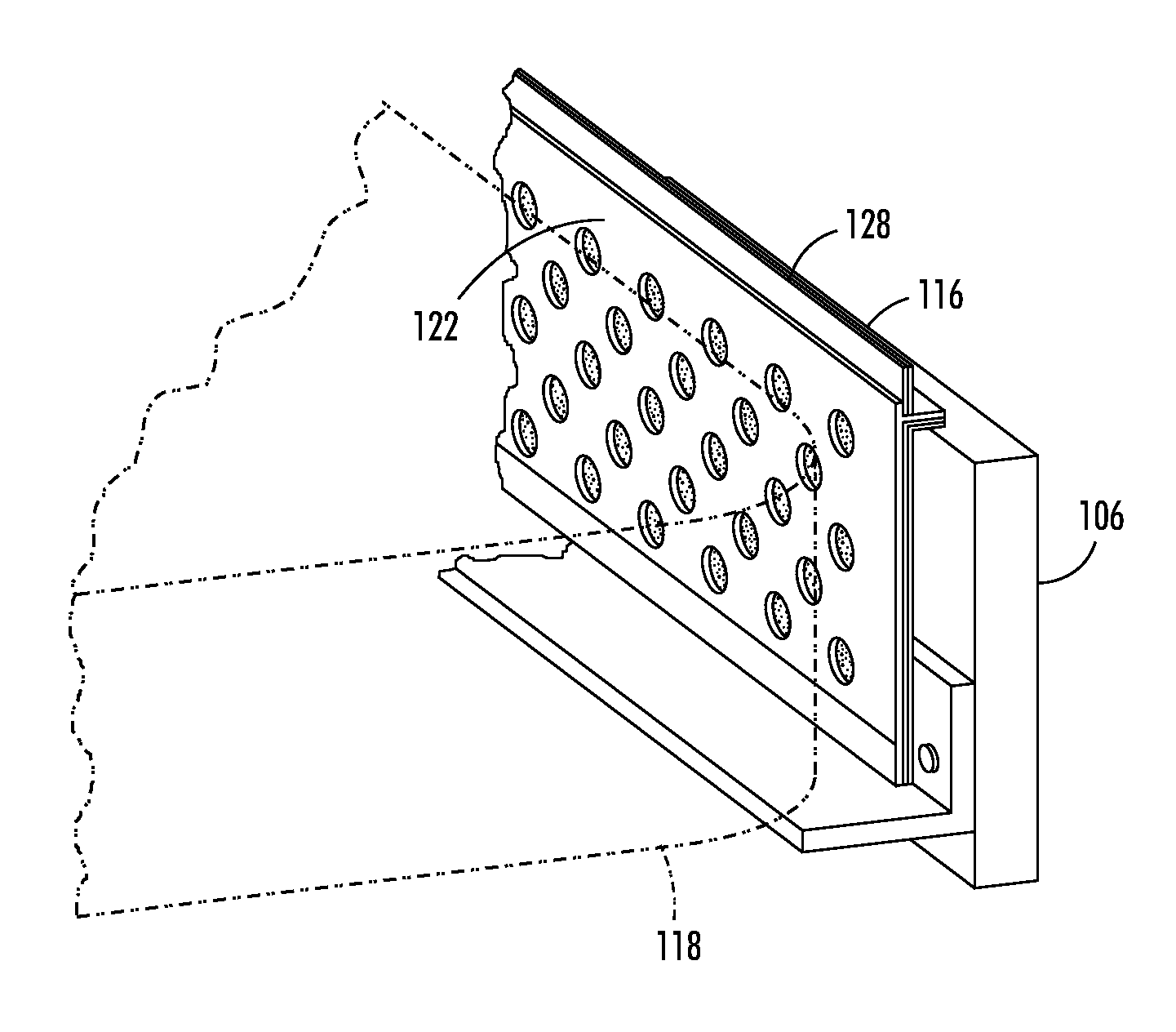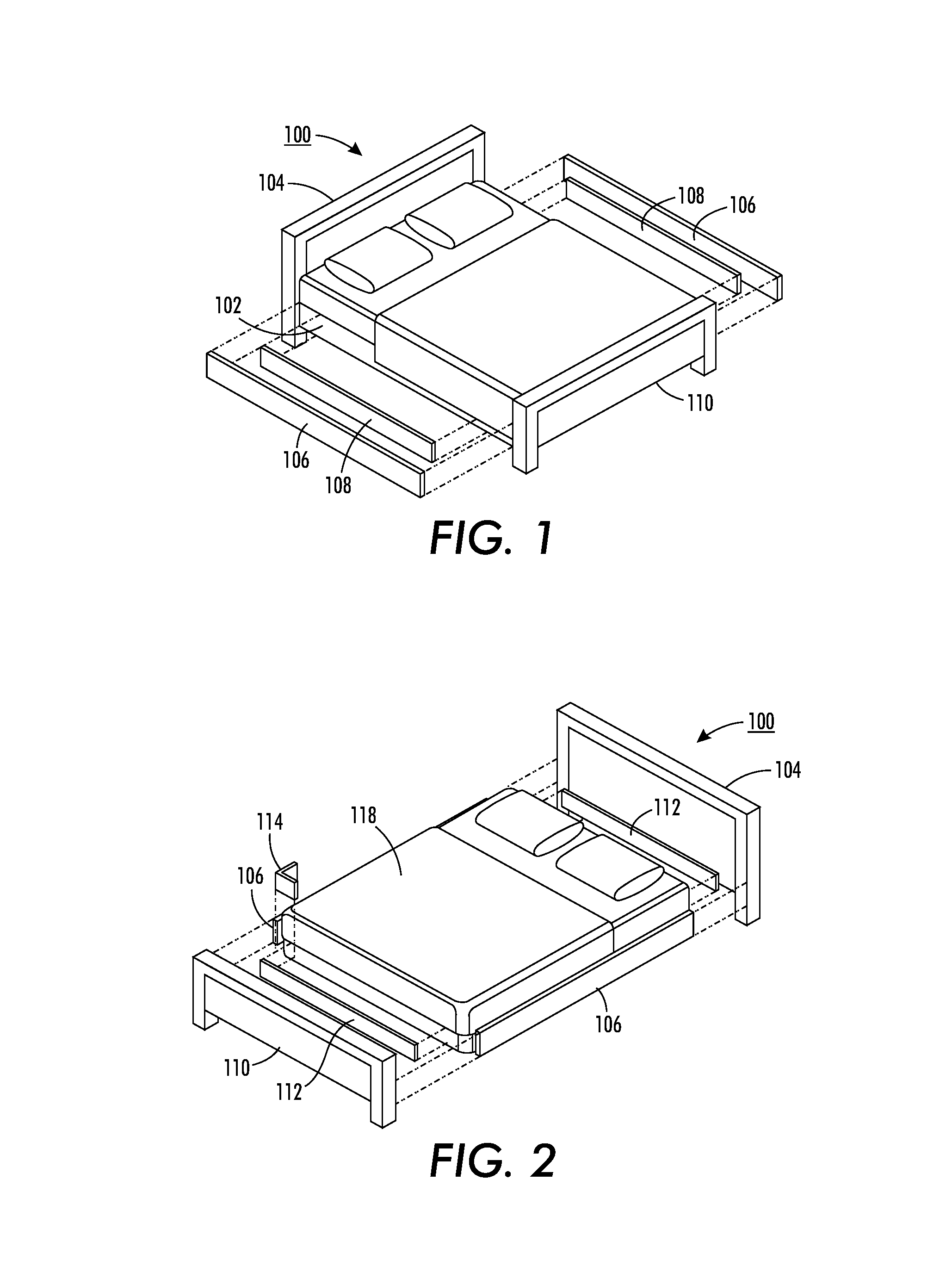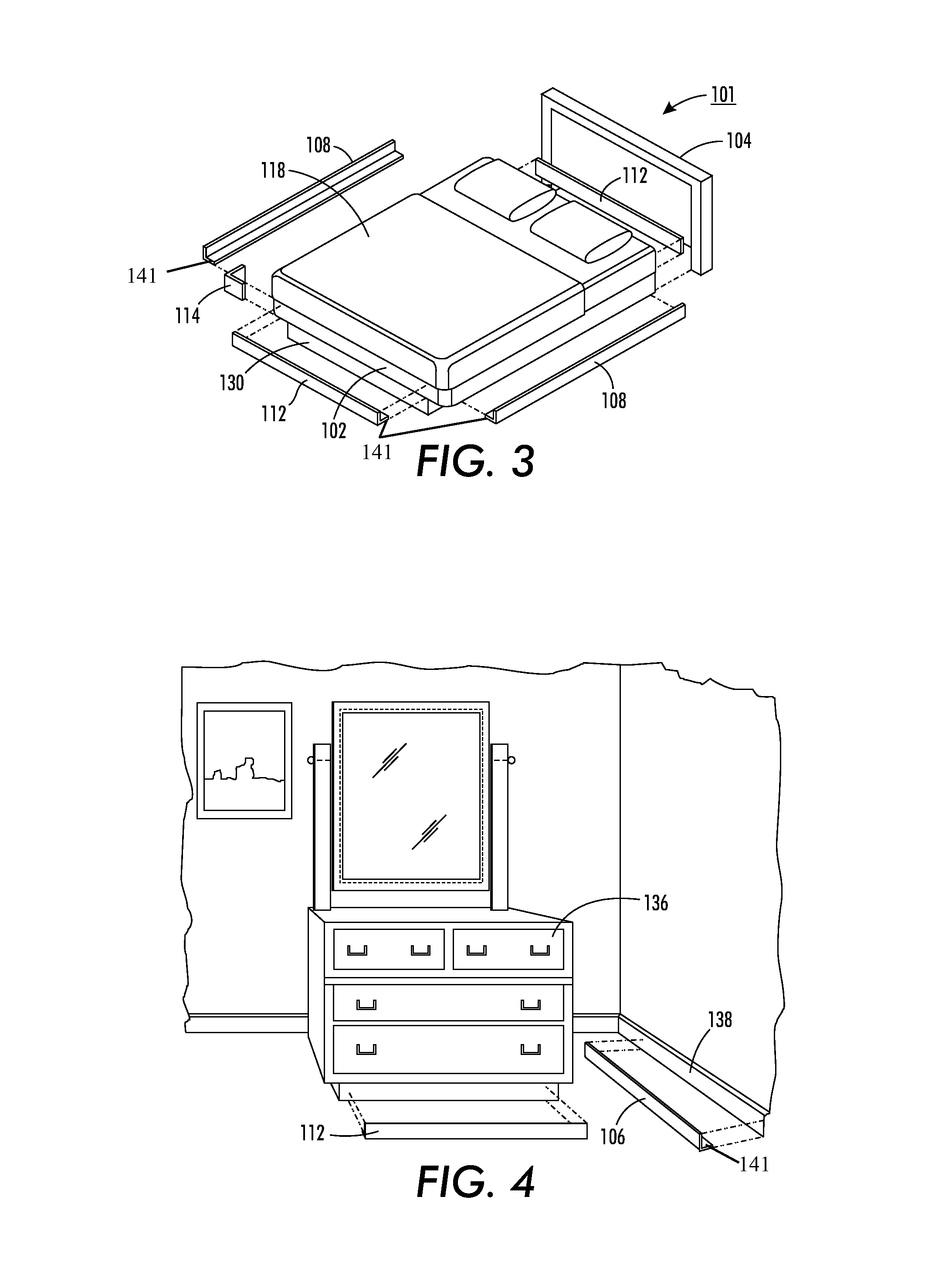Bedbug detection device and method
a detection device and bedbug technology, applied in the field of bedbug detection devices and methods, can solve problems such as damage to reputation, loss of revenue and undesirable publicity, and compromise future reservations for hotels or other lodging facilities
- Summary
- Abstract
- Description
- Claims
- Application Information
AI Technical Summary
Benefits of technology
Problems solved by technology
Method used
Image
Examples
Embodiment Construction
[0026]For a general understanding, reference is made to the drawings. In the drawings, like references have been used throughout to designate identical or similar elements. It is also noted that the drawings may not have been drawn to scale and that certain regions may have been purposely drawn disproportionately so that the features and concepts depicted therein could be properly illustrated
[0027]Turning first to FIGS. 1 and 2, shown therein are exploded perspective views of a conventional sleeping surface or bed 100. Bed 100 has a box spring 102 and mattress 118 supported between head board 104 and foot board 110, on bed rails 106, and the rails interconnect the head board 104 and foot board 110. Recognizing that bedbugs are most likely to be attracted to the bed where human victims are found, a bedbug detection device 108 is strategically positioned along or around the periphery of the box spring 102, for example captured along the sides between the box spring 102 and side rail 1...
PUM
 Login to View More
Login to View More Abstract
Description
Claims
Application Information
 Login to View More
Login to View More - R&D
- Intellectual Property
- Life Sciences
- Materials
- Tech Scout
- Unparalleled Data Quality
- Higher Quality Content
- 60% Fewer Hallucinations
Browse by: Latest US Patents, China's latest patents, Technical Efficacy Thesaurus, Application Domain, Technology Topic, Popular Technical Reports.
© 2025 PatSnap. All rights reserved.Legal|Privacy policy|Modern Slavery Act Transparency Statement|Sitemap|About US| Contact US: help@patsnap.com



